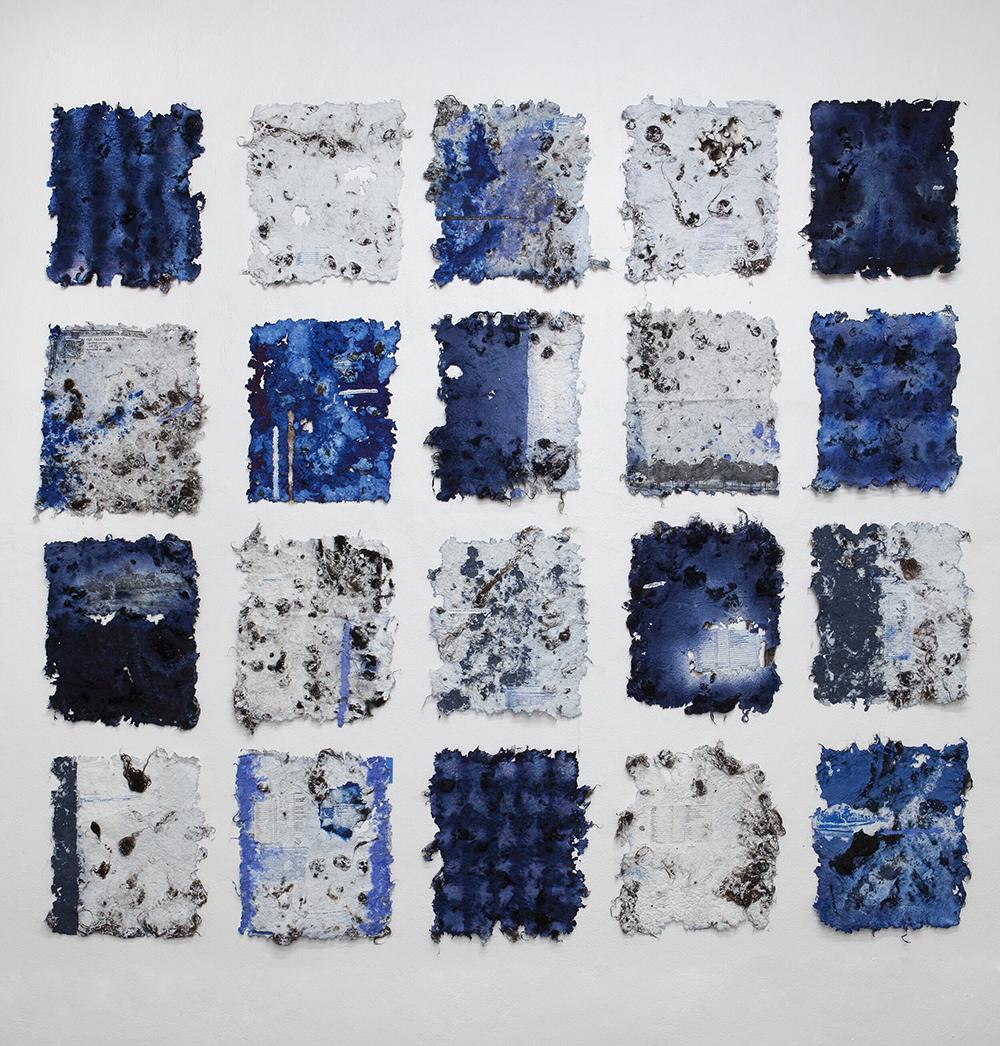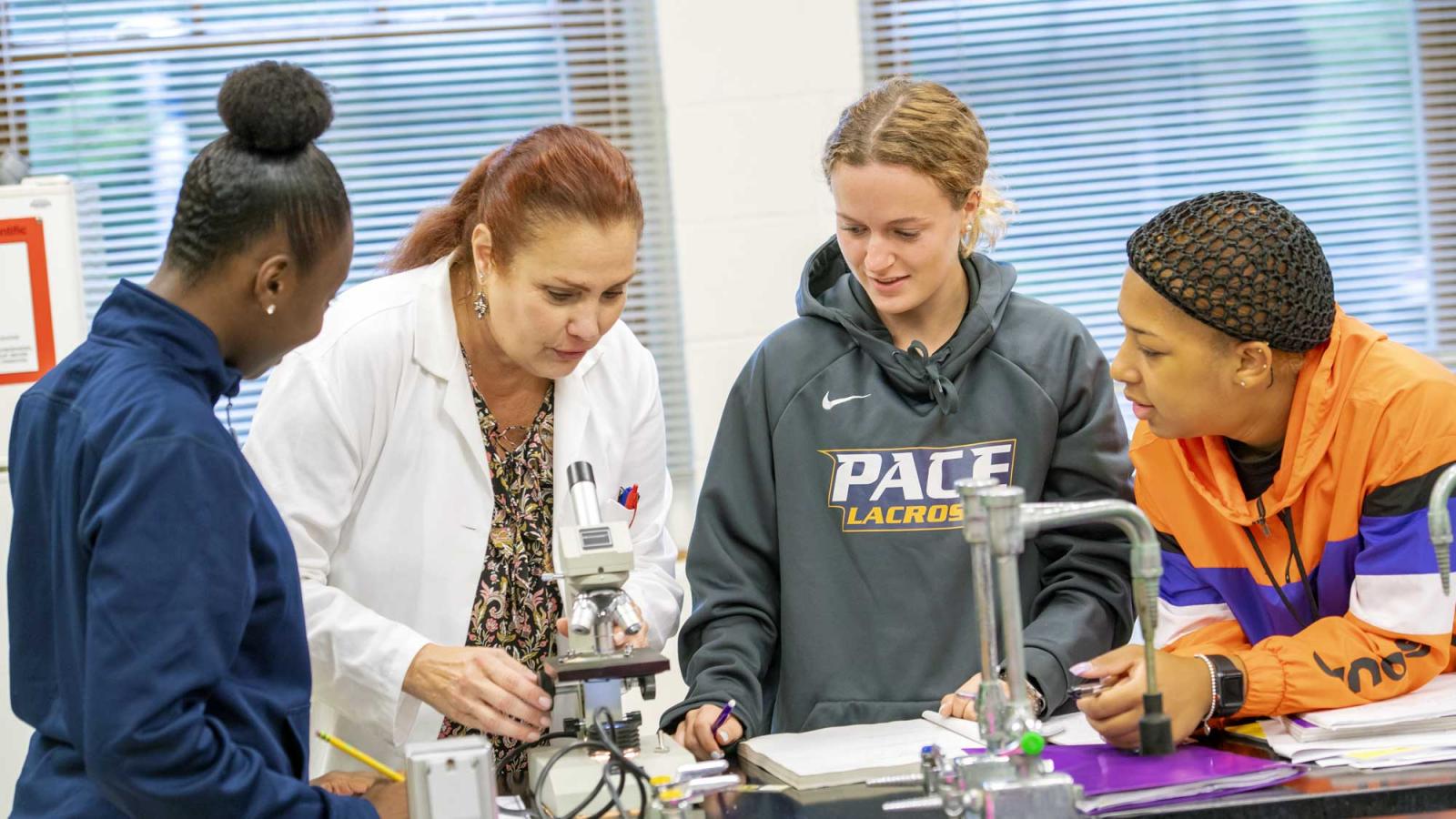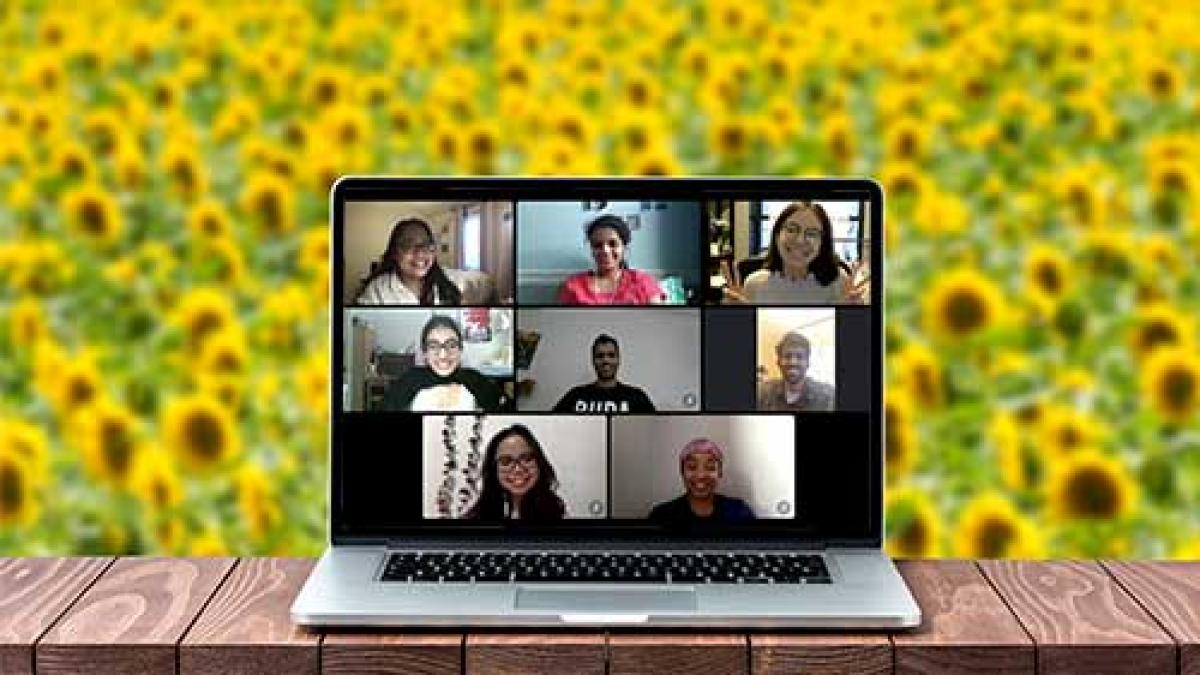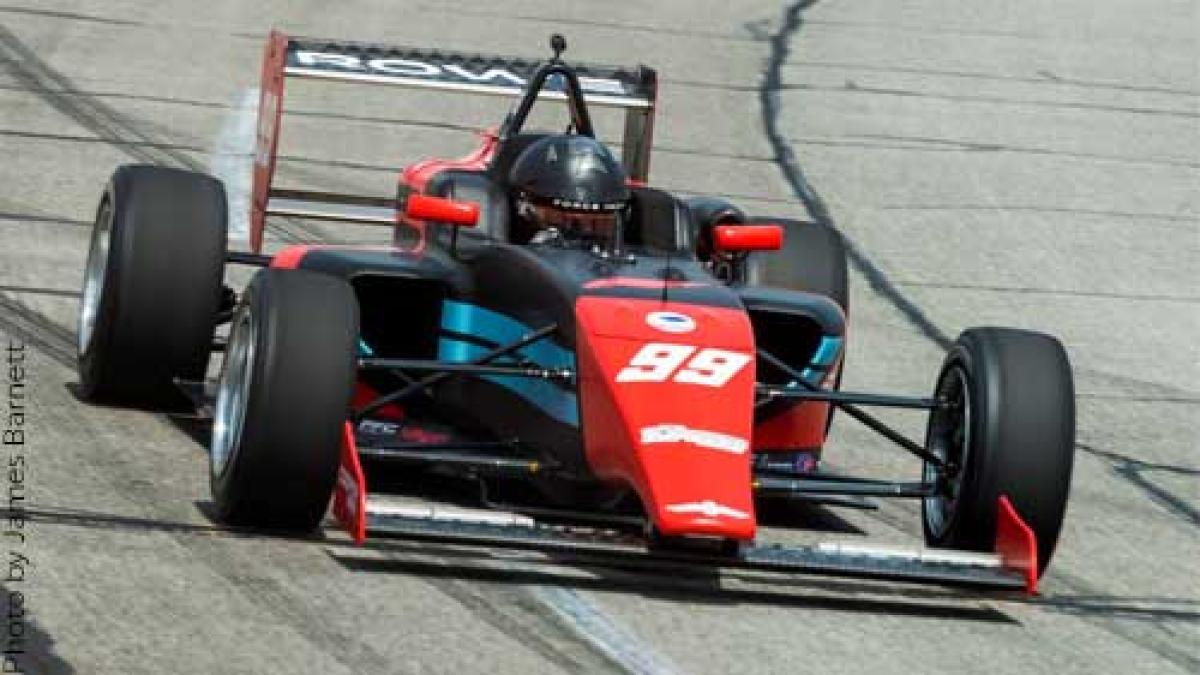
Research for All Students

View the full issue of Pace Magazine.
One distinguishing feature of a Pace education is that research isn’t just for faculty and advanced graduate students—it’s also for undergraduates. In fact, Pace has spent the past several years taking undergraduate research to the next level.
Through the newly centralized Center for Undergraduate Research Experiences (CURE) Pace is ensuring that our students are empowered to participate in faculty-mentored research and creative inquiry to enhance both their individual undergraduate experience and the overall University research culture. Originally housed in Dyson College and now based in the Office of Research and Graduate Education, CURE leads, supports, and facilitates student-faculty research collaborations throughout the schools and colleges of Pace.
The Center’s work is building upon forty years of undergraduate research in Dyson College as a high-impact educational practice that advances student success.
“CURE is working to broaden participation in undergraduate research because students benefit in significant ways,” said Assistant Provost for Research and the Director of CURE Maria Iacullo-Bird, PhD. “For example, student learning is enhanced by mentoring relationships with faculty who serve an essential role as expert advisers in undergraduate research."
While the benefits of CURE have manifested itself in myriad ways, the most tangible outcome for students is the opportunity to present their work, and get their research in front of accomplished scholars and academic leaders—something a number of students have been able to do over the past year. In addition to field-specific conferences, CURE sponsors an annual Student Research Day, where students are able to showcase their work to the Pace Community and academic professionals.
"Student engagement in undergraduate research also contributes to higher retention and graduation rates, clarifies career goals and increases enrollment in graduate and professional schools,” said Iacullo-Bird.
One such student who has taken advantage of Pace’s research opportunities is Samantha L. Smith ’21. She curated the art gallery exhibition Substance, which brought together 5 artists whose abstract artworks create meaning through the materials they use rather than through objective forms. For two semesters, Smith and her faculty mentor—Pace Art Gallery Director Sarah Cunningham—researched the history of abstract art, virtually met with potential artists, wrote text for the show, installed artworks, and completed a myriad of other tasks needed for an exhibition. Smith’s hard work resulted in an artist residency, Zoom artist talks, a window installation, and two virtual exhibitions—with one coming up in the fall. Smith, who also presented at Student Research Day, found the experience quite rewarding.

“Having the opportunity to research as an undergraduate student was amazing,” said Smith. “I was able to expand my understanding of my future field as a curator while having funding, something that I was especially grateful for because of the effects of the pandemic on employment. Being able to research a topic that I genuinely was interested in was also a great opportunity because it allowed me to really delve into art academia without the pressures of a professional work environment.”
Iacullo-Bird believes championing undergraduate research is a win-win for the University, and is excited to continue to build upon Pace’s considerable commitment to this arena.
"Student engagement in undergraduate research also contributes to higher retention and graduation rates, clarifies career goals and increases enrollment in graduate and professional schools,” said Iacullo-Bird. “Additionally, by cultivating critical thinking, problem-solving abilities, and oral and written communication skills research experiences help prepare students for the twenty-first century workplace.”
More from Pace Magazine
Announcing the establishment of the Barry M. and Jackie Gosin Center for Equity and Inclusion. This new Center, established via a donation from the Gosins, supports ongoing efforts at Pace in anti-racism and equity; expands work to elevate job placement and entrepreneurship among Black, Indigenous, and people of color (BIPOC) students; and enhances academic scholarship in these areas.
What is a hackathon? It’s a timed, team-based problem-solving day of strategy and execution where tech is used to save the day. Teams, of all different skills and abilities, come together to design software or mobile apps to solve real world issues and problems.
In a year unlike any other, the transformative power of Pace has the ability to uplift and hearten. Here are just a few of our most inspiring Pace moments.


